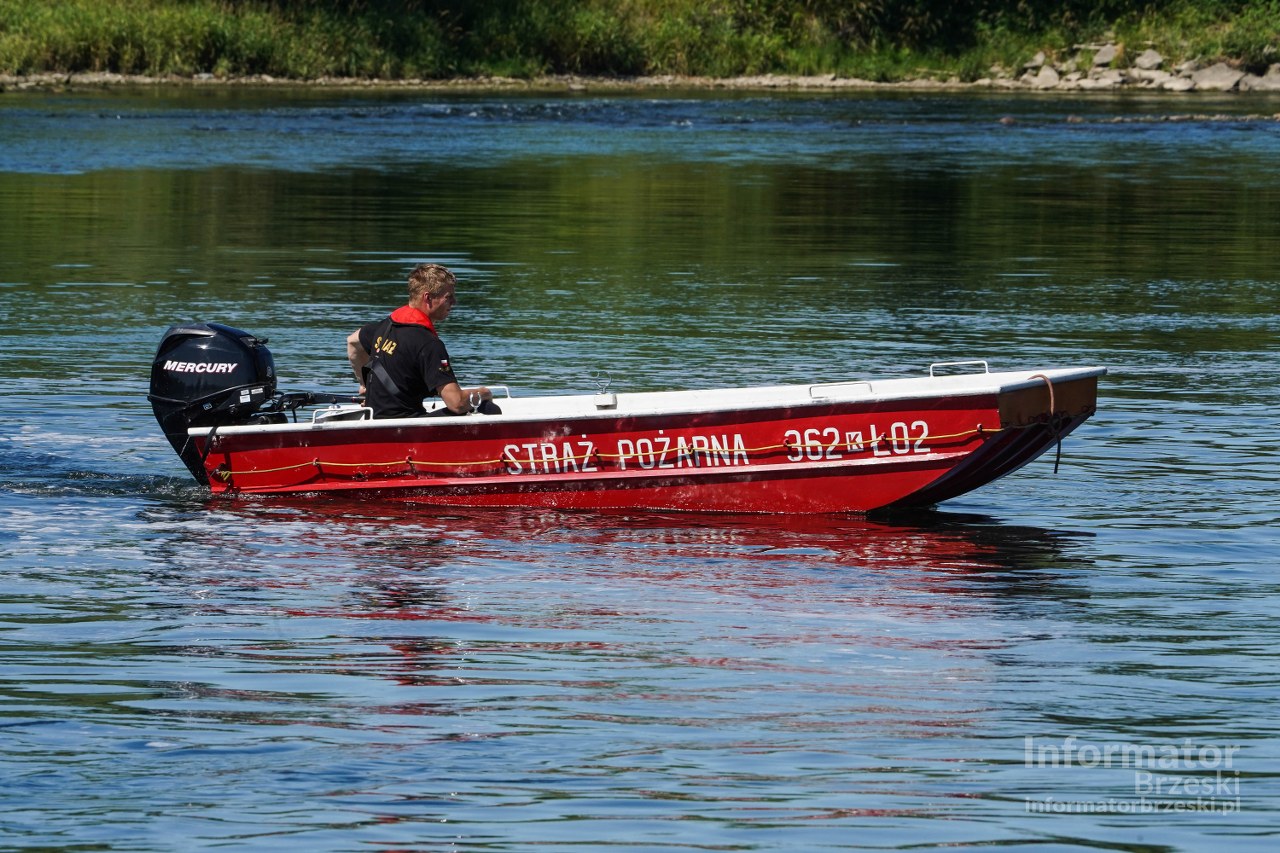B. Ratter: ... we make a virtual monument in our hearts
date: April 29, 2025 Editor: Editorial
Every memory of us is devotion and tribute and honor to those who have no graves to this day, we make a virtual monument in our hearts...
-4.jpg)
On 29 April, on the anniversary of the liberation of the German concentration camp Dachau, we celebrate the Day of Martyrdom of the Polish clergy. "In the end, the criminal activity of the chauvinists of UPA turned towards the Roman Catholic clergy. Priests died individually and together with their parishioners in churches. 82 Roman Catholic clergymen were killed in Podol and Volyn. Of these, six were killed in torture by saws of carpenters".(Archive of the Lvovian Latin rite in Kraków).
Since the beginning of the war, Ukrainians have worked with Germans, especially erstwhile it was about the extermination of the Polish element. The full alleged Ukrainian society, i.e. professors, priests, including the highest factors of the Greek Catholic Church, cooperative activists, teachers, peasant masses, participated. As a rule, Russian priests from the ambon called for the murders of the demolition of Poles and Polish people during church services (ANN, Delegation of the Government of Poland to the Country). amazed by the slaughter, the Polish population could not realize that this was a neighbour who was a kuma and a friend abruptly turned into a murderer. This psychic barrier was the biggest obstacle to self-defense.
When the nationalists undertook the action of mass extermination of cultural Polish clusters, the shepherds of the Roman Catholic Church in east Małopolska could not stay silent.
Archbishop Bolesław Twardowski took the first floor, asking Szeptycki in August 1941 to intervene in order to halt the escalation of crimes committed in the Roman Catholic rite. It didn't work.
Therefore, the letter of 8.III.1944 was already an expression of powerlessness. Bishop Twardowski presented to Szeptycki a list of the losses of the Polish community in the Archdiocese of the Latin Order of Lviv, including a list of murdered priests and abandoned pastoral institutions and robberies and murders on the Polish population. He asked only Szeptycki to give his clergy the command to immediately consume the Blessed Sacrament in specified a case if, after the execution or abrupt escape of the Latin priest, he remained in the Church of the Blessed Sacrament.
Archbishop Twardowski took another step to defend his dioceses. At the end of winter, early in the spring of 1944, he addressed Archbishop Adam Stefan Sapieha, a Kraków metropolitan, asking for intervention straight with politician General Hans Frank. Archbishop Sapieha sent on behalf of the metropolitan of Twardów a memorial on 27 March 1944, in which he calculated the names of the murdered priests from the Archdiocese of Lviv' Latin rite and the statistic of mass murders in 30 localities. However, the request to halt the criminal activities of Ukrainian bands did not bring the desired effect. (p. Volczański)
Every time we meet together is simply a dedication and tribute and worship to those who inactive have no graves, we make a virtual monument in our hearts – Fr. Prof. Józef Marecki at the conference on 11 July 2023.
It was a mystery of iniquitatis, or mystery of wickedness. The analysis of the Ukrainian genocide's genesis so far raised the question, did not collective possession happen during the birth of nationalism and the apogee of Ukrainian genocide? Analysis of methods of crime, including crimes on closest household members, or facts, as in Lubartów, where on the altar the Orthodox priest's boy cut off the head of the Catholic priest. Collective possession, due to the fact that a average man wouldn't be able to do it, even on a wave of any individual evil, on a wave of individual revenge. He can't actually do something that was done, that was programmed. due to the fact that remember, on 11 July 1943 it was an apogee, it was an assault – in 1 day, at the same time on 113 localities, on respective twelve churches. In view of this fundamental difference of religion or only ethics and civilisation of Poland and Ukraine, the imagination of the Polish union of Ukraine or alleged reconciliation seems to be ghastly. (p. Prof. Józef Marecki)
An crucial subject is the victims of Ukrainian chauvinists of another nationalities that are not mentioned. This is crucial due to the fact that so far it has been attempted to propose that Ukrainian genocide, Volyn massacre, is simply a "Polish-Ukrainian conflict" in which Ukrainian peasants supposedly rebelled against Polish masters. This is not a Polish-Ukrainian problem, but a chauvinist-planned clearing of the area from all another nationalities - emphasized Fr Tadeusz Isakowicz-Zaleski.
Unfortunately, collective possession besides affects Polish and Polish-speaking politicians representing minorities and their alleged advisors and media, who systematically deny, hide, falsify and justify the genocide of Ukrainian chauvinists.
In the Archive of the Krakow state of Carmelites Bosych in Krakow, the letter of this year Cyprian was preserved to the prior of the Lviv monastery of Carmelites barefoot Father Bolesław Sadowski dated 7 June 1943.
"Krzemieniec, June 7, 1943 Our multiple Father!
There is an chance for a fewer words to be conveyed by a individual who escapes from Ukrainian knives. [...] What is happening here now is the deficiency of words to describe these massacres and murders committed on Polish families. Descriptions with “Fire and Sword” by Sienkiewicz or “The Fire” by Kossak-Szczuck light against what is happening here. Almost all Poles were slaughtered in the full Szymieniecki territory in the villages. Those who managed to escape the Hajdamat knives or spheres took refuge in Krzemieniec and here in Wiśniowec, for only in these 2 villages there are German crews. In others specified as Shumsk, Dederkały, Kuty, and Lanowiec, weaker crews were struck out or themselves fled from more many bands of Ukrainians. I will chronologically mention a number of accidents, so that I do not be overcompensated.
It began in November of last year [1942] and continued through the winter. But these were inactive occasional accidents, for example, in this village 1 household was slaughtered, in another 2 or three. But the mass faces only started with the large Night and are getting stronger all day. Shortly after Christmas, 600 Poles were murdered in villages close Szumsk, the remainder took refuge in Krzemieniec. Then they hit Kuty. It was the largest parish in the siliceite territory (4 1000 souls). erstwhile the murders began, the people took refuge in the church with the priest. The church was defended for 1 night. During the day, women and children went to the Silicone, men left in the church to defend him. The next night there were more hordes. The church was demolished and 200 Poles were slaughtered in it. There was not a single soul left from the full parish, and the silicate advanced school church was converted into an flat for these refugees. Then Germany took young people to work in Germany, and old people endure utmost poverty. (...) Now almost all evening you can see how they burn the settlements of Poles, and [those] who did not escape kill in a beastly way. From May 15th to May 16th, the Kusi household in Mills was attacked. 2 adult daughters and a son, 21, were killed. The remainder of the household managed to escape. Deprav was robbed, then set on fire, and those killed in the fire were thrown where they burned to coal.
... Who can escape to the Governorate due to the fact that these hajdamaki are stuck, that not 1 Polish leg should stay in Volyn. The cherry tree almost is gone, due to the fact that in the city there were only judaic houses, and Jews were killed all single 1 last year. And now all their homes and homes were undressed by the Ukrainians, only the castle, the monastery, the municipal office and the pharmacy remained. In the suburbs, the Hajdamak houses are just standing. To conclude with long writing, we ask one more time for holy prayers, so that our nerves may be calm, so that we may last in a low opinion of the will. God's torture of morals, possibly physical.
Once again, I ask you to pray. The unworthy boy of Cyprian from St Michael
During the attack of the Ukrainians on 7nd of 1944 on the monastery and church of the barefoot Carmelites in Wiśniowc Nowy, where there were more than 150 lay people, brother Cyprian of St. Michael was strangled in the basement with a habit belt. The body was thrown down in the monastery basement. Exhumed 26 April 1944, buried in the parish cemetery in Wiśniowc Nowy in a collective grave, which was planted after the war ended. There's no sign of her at the moment. It is worth quoting the account of s. Maria C. from Wiśniwiec Nowe:
"The tragedy occurred on 1 February 1944, after the departure of the Hungarian military unit. The Banders stormed into the cherry tree on the night of 6-7 February and began a gruesome slaughter. Many were burned alive in their homes, and children were put on a stake or torn by their hands and legs. Women were torn open their stomachs, cut off their ears and hands, poked out their eyes, cut off their noses and breasts. For this they utilized criminal tools: rusty knives, fork, scythe, and they besides had peculiar clamps with screws to which heads were put into - to torment through pressure. Others were hung upside down, or cut in half by saws. I went to see them this morning. I've seen a pile of bodies convulsing and suffering. (Pr. Józef Marecki spiritual and spiritual persons of the Latin rite murdered by Ukrainian nationalists 1939-1945, IPN)
Oh, my God.
Since the beginning of the war, Ukrainians have worked with Germans, especially erstwhile it was about the extermination of the Polish element. The full alleged Ukrainian society, i.e. professors, priests, including the highest factors of the Greek Catholic Church, cooperative activists, teachers, peasant masses, participated. As a rule, Russian priests from the ambon called for the murders of the demolition of Poles and Polish people during church services (ANN, Delegation of the Government of Poland to the Country). amazed by the slaughter, the Polish population could not realize that this was a neighbour who was a kuma and a friend abruptly turned into a murderer. This psychic barrier was the biggest obstacle to self-defense.
When the nationalists undertook the action of mass extermination of cultural Polish clusters, the shepherds of the Roman Catholic Church in east Małopolska could not stay silent.
Archbishop Bolesław Twardowski took the first floor, asking Szeptycki in August 1941 to intervene in order to halt the escalation of crimes committed in the Roman Catholic rite. It didn't work.
Therefore, the letter of 8.III.1944 was already an expression of powerlessness. Bishop Twardowski presented to Szeptycki a list of the losses of the Polish community in the Archdiocese of the Latin Order of Lviv, including a list of murdered priests and abandoned pastoral institutions and robberies and murders on the Polish population. He asked only Szeptycki to give his clergy the command to immediately consume the Blessed Sacrament in specified a case if, after the execution or abrupt escape of the Latin priest, he remained in the Church of the Blessed Sacrament.
Archbishop Twardowski took another step to defend his dioceses. At the end of winter, early in the spring of 1944, he addressed Archbishop Adam Stefan Sapieha, a Kraków metropolitan, asking for intervention straight with politician General Hans Frank. Archbishop Sapieha sent on behalf of the metropolitan of Twardów a memorial on 27 March 1944, in which he calculated the names of the murdered priests from the Archdiocese of Lviv' Latin rite and the statistic of mass murders in 30 localities. However, the request to halt the criminal activities of Ukrainian bands did not bring the desired effect. (p. Volczański)
Every time we meet together is simply a dedication and tribute and worship to those who inactive have no graves, we make a virtual monument in our hearts – Fr. Prof. Józef Marecki at the conference on 11 July 2023.
It was a mystery of iniquitatis, or mystery of wickedness. The analysis of the Ukrainian genocide's genesis so far raised the question, did not collective possession happen during the birth of nationalism and the apogee of Ukrainian genocide? Analysis of methods of crime, including crimes on closest household members, or facts, as in Lubartów, where on the altar the Orthodox priest's boy cut off the head of the Catholic priest. Collective possession, due to the fact that a average man wouldn't be able to do it, even on a wave of any individual evil, on a wave of individual revenge. He can't actually do something that was done, that was programmed. due to the fact that remember, on 11 July 1943 it was an apogee, it was an assault – in 1 day, at the same time on 113 localities, on respective twelve churches. In view of this fundamental difference of religion or only ethics and civilisation of Poland and Ukraine, the imagination of the Polish union of Ukraine or alleged reconciliation seems to be ghastly. (p. Prof. Józef Marecki)
An crucial subject is the victims of Ukrainian chauvinists of another nationalities that are not mentioned. This is crucial due to the fact that so far it has been attempted to propose that Ukrainian genocide, Volyn massacre, is simply a "Polish-Ukrainian conflict" in which Ukrainian peasants supposedly rebelled against Polish masters. This is not a Polish-Ukrainian problem, but a chauvinist-planned clearing of the area from all another nationalities - emphasized Fr Tadeusz Isakowicz-Zaleski.
Unfortunately, collective possession besides affects Polish and Polish-speaking politicians representing minorities and their alleged advisors and media, who systematically deny, hide, falsify and justify the genocide of Ukrainian chauvinists.
In the Archive of the Krakow state of Carmelites Bosych in Krakow, the letter of this year Cyprian was preserved to the prior of the Lviv monastery of Carmelites barefoot Father Bolesław Sadowski dated 7 June 1943.
"Krzemieniec, June 7, 1943 Our multiple Father!
There is an chance for a fewer words to be conveyed by a individual who escapes from Ukrainian knives. [...] What is happening here now is the deficiency of words to describe these massacres and murders committed on Polish families. Descriptions with “Fire and Sword” by Sienkiewicz or “The Fire” by Kossak-Szczuck light against what is happening here. Almost all Poles were slaughtered in the full Szymieniecki territory in the villages. Those who managed to escape the Hajdamat knives or spheres took refuge in Krzemieniec and here in Wiśniowec, for only in these 2 villages there are German crews. In others specified as Shumsk, Dederkały, Kuty, and Lanowiec, weaker crews were struck out or themselves fled from more many bands of Ukrainians. I will chronologically mention a number of accidents, so that I do not be overcompensated.
It began in November of last year [1942] and continued through the winter. But these were inactive occasional accidents, for example, in this village 1 household was slaughtered, in another 2 or three. But the mass faces only started with the large Night and are getting stronger all day. Shortly after Christmas, 600 Poles were murdered in villages close Szumsk, the remainder took refuge in Krzemieniec. Then they hit Kuty. It was the largest parish in the siliceite territory (4 1000 souls). erstwhile the murders began, the people took refuge in the church with the priest. The church was defended for 1 night. During the day, women and children went to the Silicone, men left in the church to defend him. The next night there were more hordes. The church was demolished and 200 Poles were slaughtered in it. There was not a single soul left from the full parish, and the silicate advanced school church was converted into an flat for these refugees. Then Germany took young people to work in Germany, and old people endure utmost poverty. (...) Now almost all evening you can see how they burn the settlements of Poles, and [those] who did not escape kill in a beastly way. From May 15th to May 16th, the Kusi household in Mills was attacked. 2 adult daughters and a son, 21, were killed. The remainder of the household managed to escape. Deprav was robbed, then set on fire, and those killed in the fire were thrown where they burned to coal.
... Who can escape to the Governorate due to the fact that these hajdamaki are stuck, that not 1 Polish leg should stay in Volyn. The cherry tree almost is gone, due to the fact that in the city there were only judaic houses, and Jews were killed all single 1 last year. And now all their homes and homes were undressed by the Ukrainians, only the castle, the monastery, the municipal office and the pharmacy remained. In the suburbs, the Hajdamak houses are just standing. To conclude with long writing, we ask one more time for holy prayers, so that our nerves may be calm, so that we may last in a low opinion of the will. God's torture of morals, possibly physical.
Once again, I ask you to pray. The unworthy boy of Cyprian from St Michael
During the attack of the Ukrainians on 7nd of 1944 on the monastery and church of the barefoot Carmelites in Wiśniowc Nowy, where there were more than 150 lay people, brother Cyprian of St. Michael was strangled in the basement with a habit belt. The body was thrown down in the monastery basement. Exhumed 26 April 1944, buried in the parish cemetery in Wiśniowc Nowy in a collective grave, which was planted after the war ended. There's no sign of her at the moment. It is worth quoting the account of s. Maria C. from Wiśniwiec Nowe:
"The tragedy occurred on 1 February 1944, after the departure of the Hungarian military unit. The Banders stormed into the cherry tree on the night of 6-7 February and began a gruesome slaughter. Many were burned alive in their homes, and children were put on a stake or torn by their hands and legs. Women were torn open their stomachs, cut off their ears and hands, poked out their eyes, cut off their noses and breasts. For this they utilized criminal tools: rusty knives, fork, scythe, and they besides had peculiar clamps with screws to which heads were put into - to torment through pressure. Others were hung upside down, or cut in half by saws. I went to see them this morning. I've seen a pile of bodies convulsing and suffering. (Pr. Józef Marecki spiritual and spiritual persons of the Latin rite murdered by Ukrainian nationalists 1939-1945, IPN)
Oh, my God.


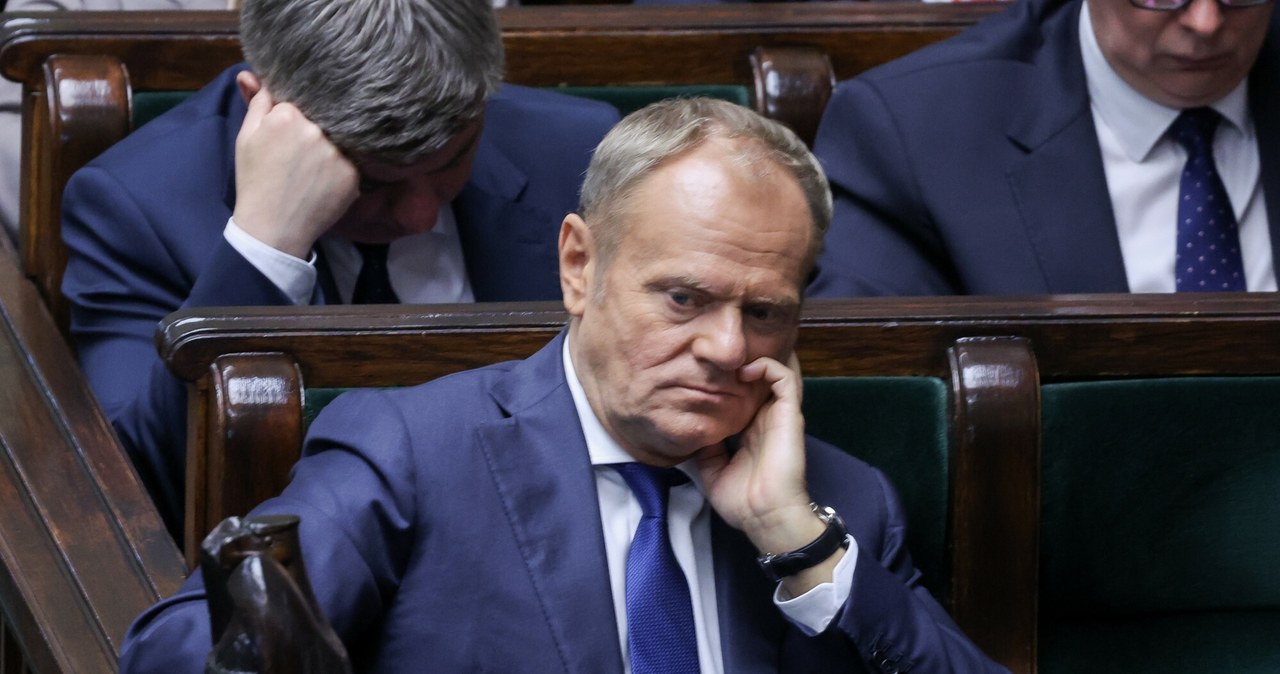
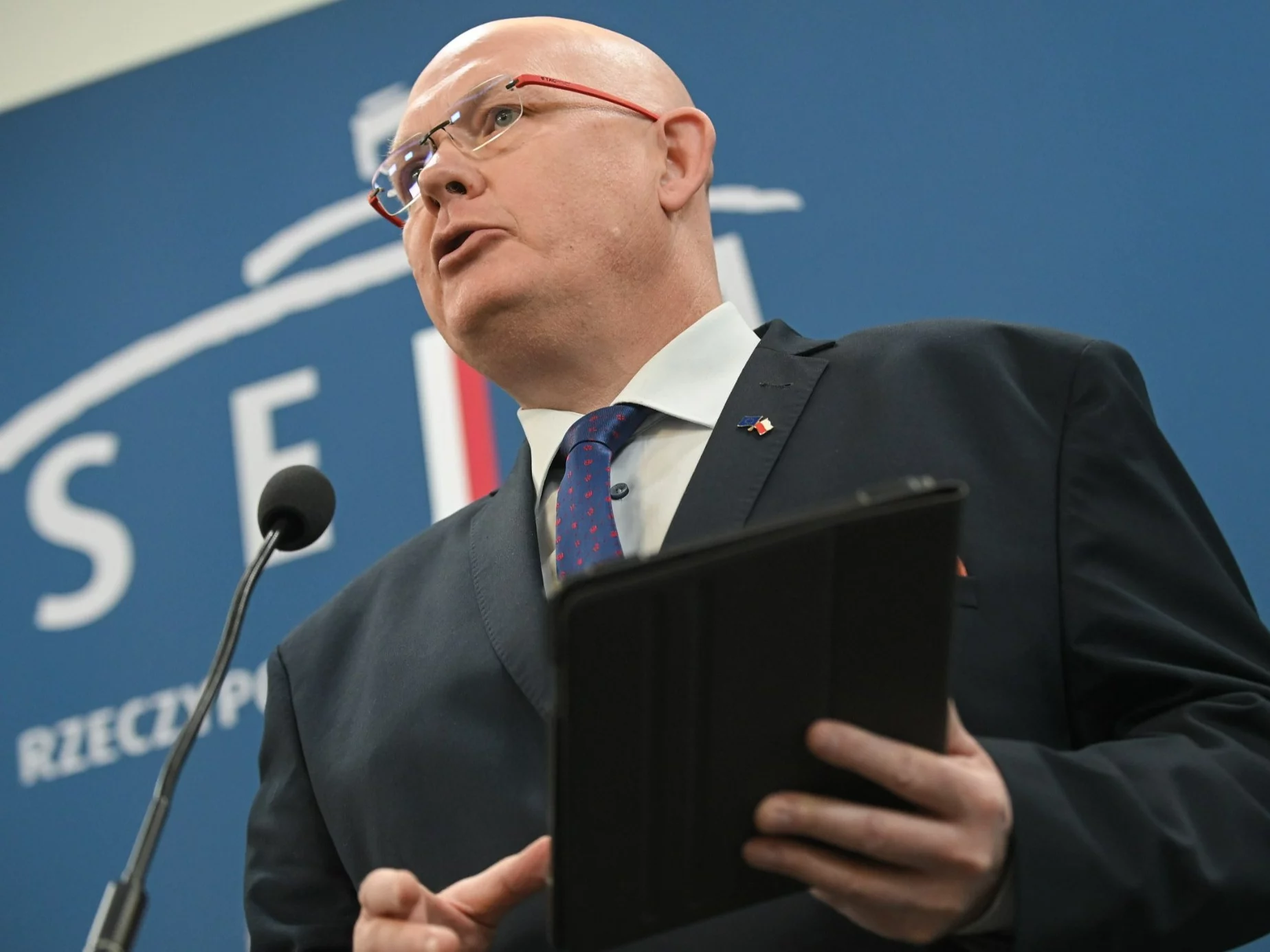

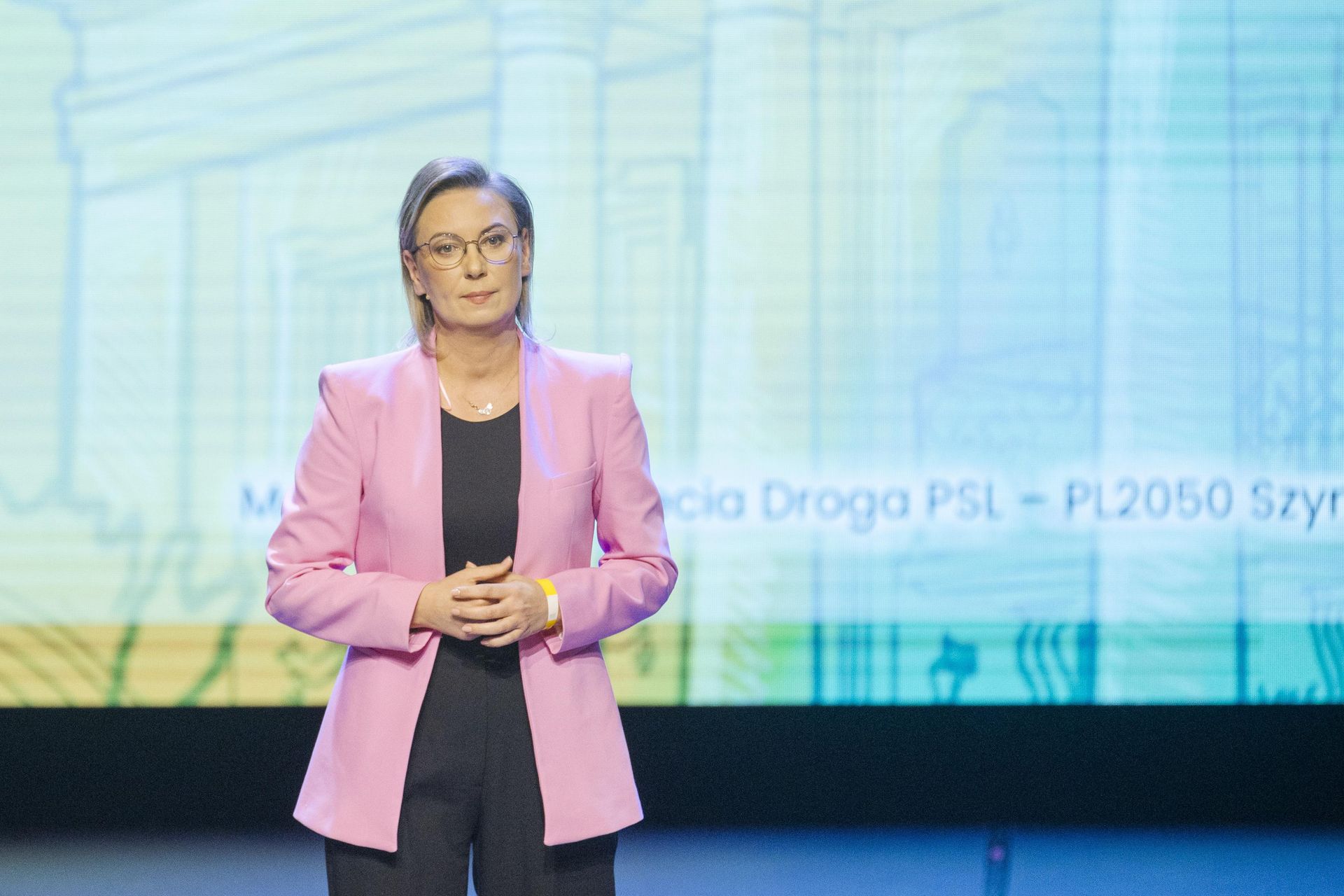
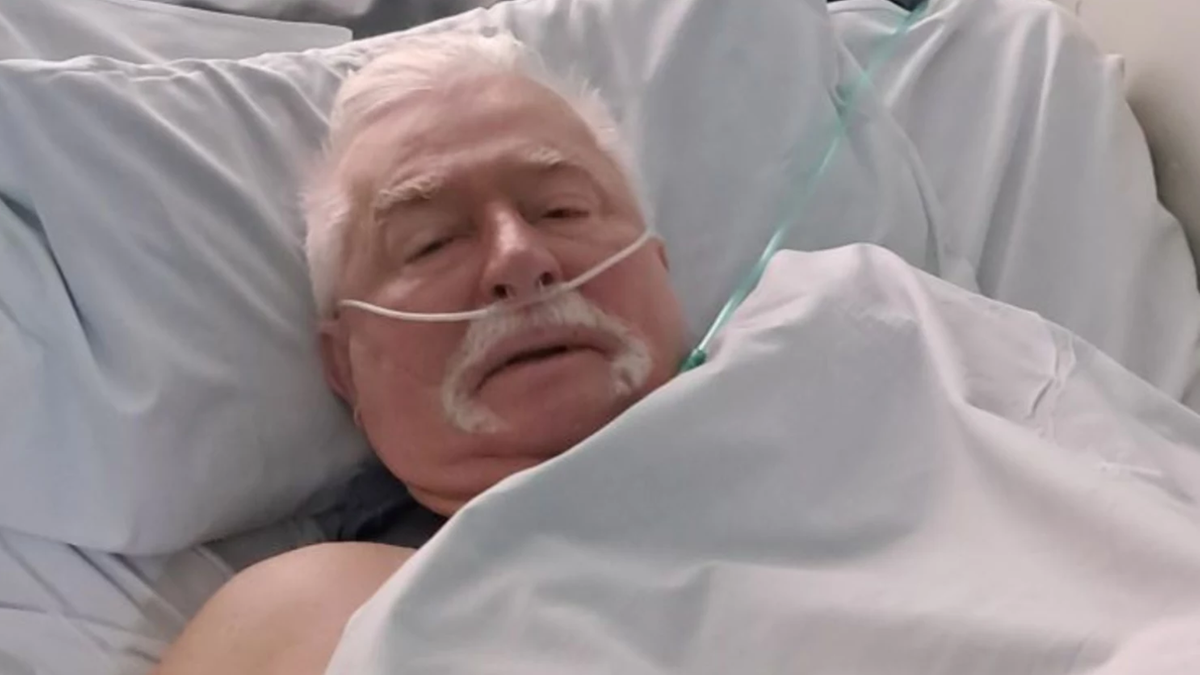

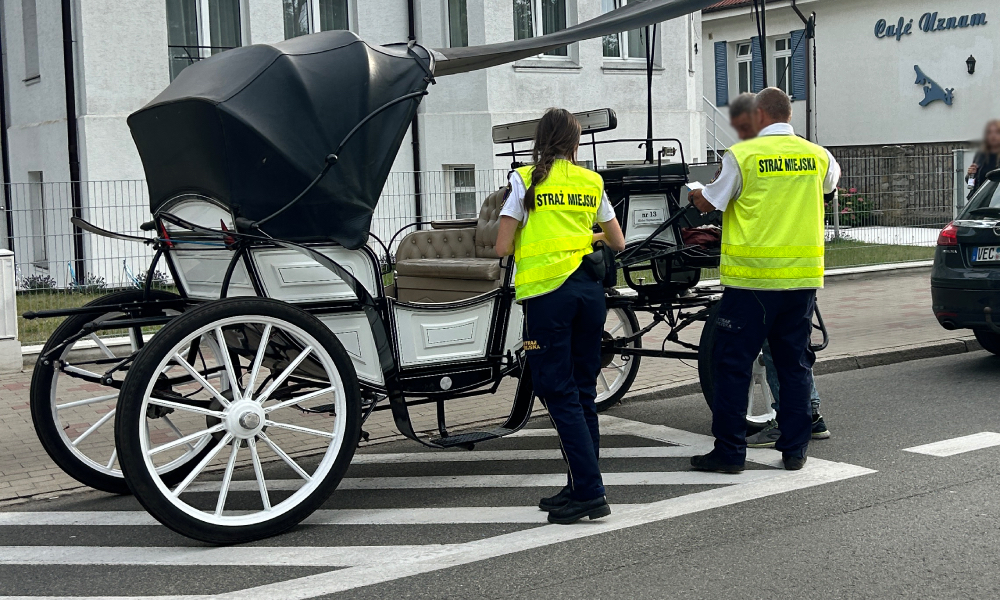
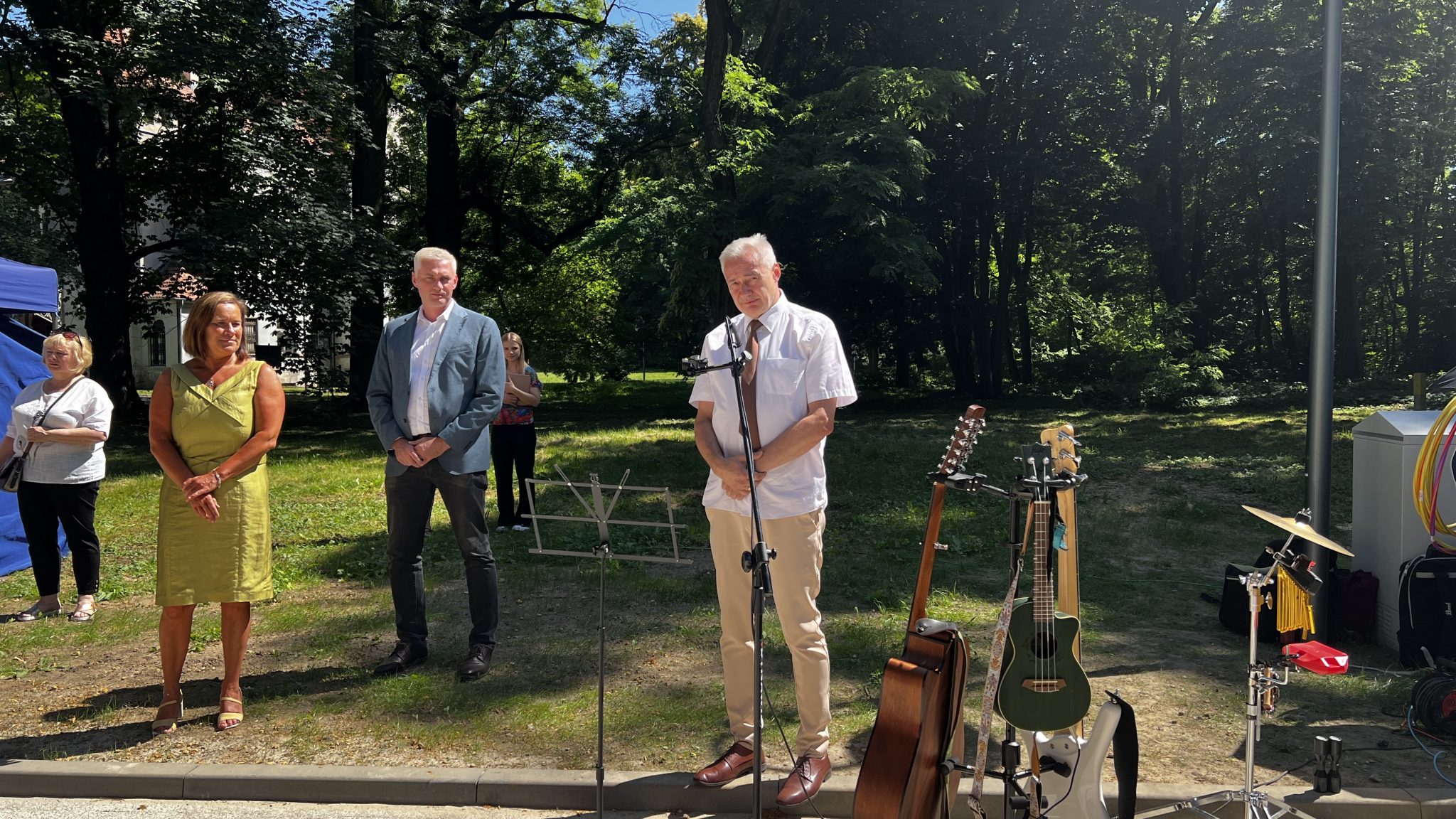
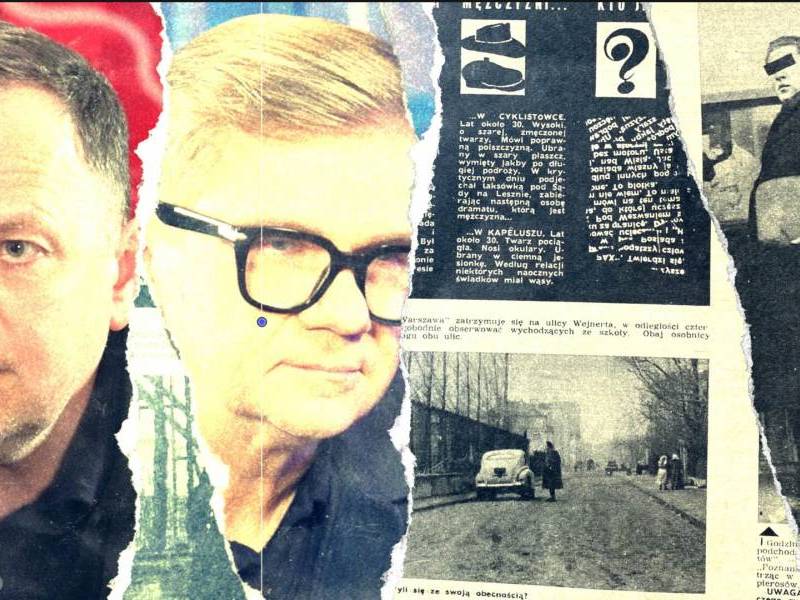
![Nielisz: Power Sobótka. największą popularnością cieszyły się koncerty [ZDJĘCIA]](https://static2.kronikatygodnia.pl/data/articles/xga-4x3-nielisz-power-sobotka-najwieksza-popularnoscia-cieszyly-sie-koncerty-zdjecia-1751631617.jpg)


